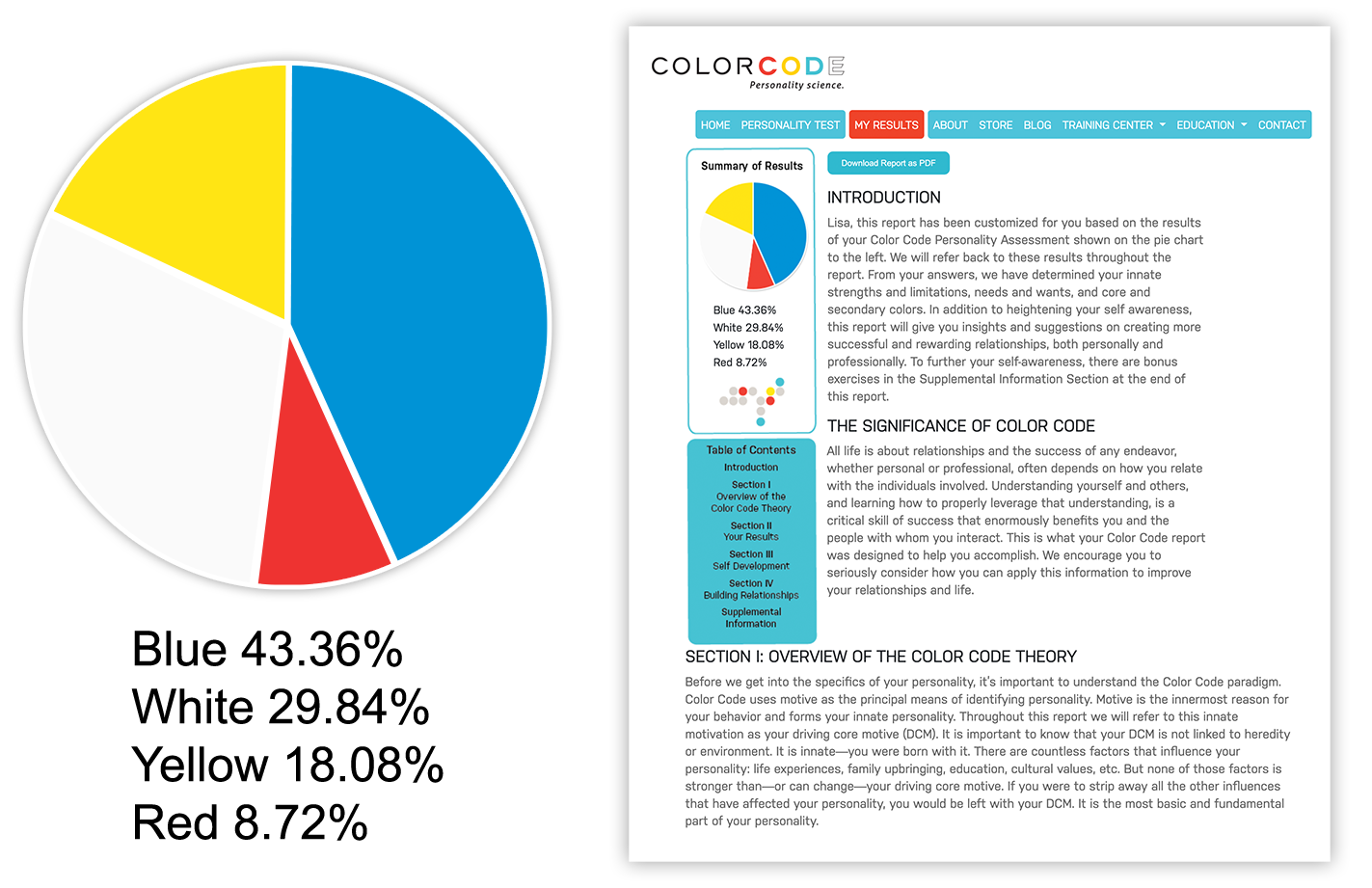Silently Stubborn is a LIMITATION of the WHITE personality in the Color Code Personality Assessment.
Silently Stubborn
"An unbending tree is easily broken."
― Lao Tzu
 Being silently stubborn refers to a personality trait or behavior where an individual may not overtly express their stubbornness or resistance, but instead quietly and persistently holds onto their opinions, beliefs, or desires. It may manifest as a subtle form of stubbornness, where a person may resist change, be resistant to new ideas, or hold onto their own perspective without openly expressing it. Silently stubborn individuals may appear agreeable on the surface, but internally hold strong opinions or convictions that they may not vocalize or readily share with others.
Being silently stubborn refers to a personality trait or behavior where an individual may not overtly express their stubbornness or resistance, but instead quietly and persistently holds onto their opinions, beliefs, or desires. It may manifest as a subtle form of stubbornness, where a person may resist change, be resistant to new ideas, or hold onto their own perspective without openly expressing it. Silently stubborn individuals may appear agreeable on the surface, but internally hold strong opinions or convictions that they may not vocalize or readily share with others.
Here are some common signs that you may be silently stubborn:
- Ignoring or dismissing feedback from others without providing any explanation or justification.
- Avoiding discussions or debates that challenge your beliefs or opinions, and refraining from expressing your true thoughts or feelings on the matter.
- Being unwilling to consider alternative viewpoints or perspectives, and clinging to your own beliefs or opinions without considering other possibilities.
- Refusing to compromise or find common ground in conflicts or disagreements, and insisting on having things your way.
- Preferring to keep your thoughts, opinions, or preferences to yourself, even when it may be necessary to express them in order to resolve conflicts or make decisions.
- Demonstrating a pattern of repeating the same actions or decisions, even if they have resulted in negative outcomes in the past.
- Avoiding situations where your views may be challenged, and withdrawing or becoming defensive when confronted with differing perspectives.
- Being resistant to change or unwilling to adapt to new information or circumstances, and insisting on maintaining the status quo.
- Holding on to fixed beliefs or opinions, even when presented with evidence that contradicts them.
- Being unwilling to engage in open-minded discussion or reflection, and exhibiting a closed or rigid mindset when it comes to new ideas or perspectives.
Here are 9 strategies for overcoming being silently stubborn:
-
Practice self-awareness: Reflect on your thoughts, beliefs, and behaviors to gain insight into your patterns of stubbornness. Recognize when you may be holding on to rigid views or resisting change silently.
-
Cultivate flexibility: Be open to new ideas, perspectives, and feedback from others. Practice adaptability and willingness to change your opinions or approaches when appropriate.
-
Improve communication: Learn to express your thoughts, feelings, and concerns openly and honestly with others. Avoid bottling up your stubbornness silently and strive to communicate effectively and respectfully.
-
Seek diverse input: Surround yourself with diverse voices and perspectives. Engage in discussions with people who have different opinions, beliefs, and backgrounds to broaden your understanding and challenge your own assumptions.
-
Practice active listening: Make an effort to truly listen to others without interrupting or dismissing their opinions. Try to understand their point of view before formulating your response.
-
Embrace humility: Recognize that you may not always be right and that it's okay to change your mind. Be willing to admit mistakes, learn from them, and adjust your views or actions accordingly.
-
Foster collaboration: Develop a collaborative mindset and be willing to work with others towards common goals. Value teamwork and cooperation over rigid individualism.
-
Practice empathy: Put yourself in others' shoes and try to understand their perspectives and emotions. Cultivate empathy towards their opinions and be willing to consider alternative viewpoints.
-
Practice mindfulness: Cultivate mindfulness to be more present and aware of your thoughts, emotions, and behaviors. Mindfulness can help you observe your stubborn tendencies and choose more flexible responses.
Being silent stubbornness can have negative consequences, such as inflexibility, unwillingness to compromise, and difficulties in adapting to new situations or perspectives. Finding a balance between determination and flexibility is essential for healthy and effective communication and relationships. It is a journey of self-improvement and growth that can lead to healthier relationships, improved decision-making, and greater personal development. By recognizing and addressing your stubborn tendencies, you can cultivate a more open-minded and adaptable approach to life, fostering positive change and growth within yourself and your interactions with others.
Letting go of silent stubbornness can open the doors to better relationships, improved communication, and increased personal growth. Being silently stubborn often involves holding onto rigid beliefs, opinions, or behaviors without expressing them openly, which can lead to misunderstandings, miscommunications, and unresolved conflicts. By letting go of silent stubbornness, we can create a more harmonious and authentic life. It involves being open to different perspectives, willing to listen and communicate openly, and being adaptable to change. Life without silent stubbornness can involve healthy and constructive communication, where we express our thoughts, feelings, and needs openly and honestly, and actively listen to others with empathy and respect. It can lead to improved relationships, better problem-solving skills, and greater cooperation with others. Letting go of silent stubbornness also involves being open to feedback, self-reflection, and personal growth, as we recognize that we are not always right and can learn from others. It can result in increased self-awareness, emotional intelligence, and greater flexibility in navigating life's challenges. Ultimately, letting go of silent stubbornness can lead to more harmonious relationships, improved communication, and a more fulfilling and meaningful life.
Silently Stubborn
"An unbending tree is easily broken."
― Lao Tzu
 Being silently stubborn refers to a personality trait or behavior where an individual may not overtly express their stubbornness or resistance, but instead quietly and persistently holds onto their opinions, beliefs, or desires. It may manifest as a subtle form of stubbornness, where a person may resist change, be resistant to new ideas, or hold onto their own perspective without openly expressing it. Silently stubborn individuals may appear agreeable on the surface, but internally hold strong opinions or convictions that they may not vocalize or readily share with others.
Being silently stubborn refers to a personality trait or behavior where an individual may not overtly express their stubbornness or resistance, but instead quietly and persistently holds onto their opinions, beliefs, or desires. It may manifest as a subtle form of stubbornness, where a person may resist change, be resistant to new ideas, or hold onto their own perspective without openly expressing it. Silently stubborn individuals may appear agreeable on the surface, but internally hold strong opinions or convictions that they may not vocalize or readily share with others.
Here are some common signs that you may be silently stubborn:
- Ignoring or dismissing feedback from others without providing any explanation or justification.
- Avoiding discussions or debates that challenge your beliefs or opinions, and refraining from expressing your true thoughts or feelings on the matter.
- Being unwilling to consider alternative viewpoints or perspectives, and clinging to your own beliefs or opinions without considering other possibilities.
- Refusing to compromise or find common ground in conflicts or disagreements, and insisting on having things your way.
- Preferring to keep your thoughts, opinions, or preferences to yourself, even when it may be necessary to express them in order to resolve conflicts or make decisions.
- Demonstrating a pattern of repeating the same actions or decisions, even if they have resulted in negative outcomes in the past.
- Avoiding situations where your views may be challenged, and withdrawing or becoming defensive when confronted with differing perspectives.
- Being resistant to change or unwilling to adapt to new information or circumstances, and insisting on maintaining the status quo.
- Holding on to fixed beliefs or opinions, even when presented with evidence that contradicts them.
- Being unwilling to engage in open-minded discussion or reflection, and exhibiting a closed or rigid mindset when it comes to new ideas or perspectives.
Here are 9 strategies for overcoming being silently stubborn:
-
Practice self-awareness: Reflect on your thoughts, beliefs, and behaviors to gain insight into your patterns of stubbornness. Recognize when you may be holding on to rigid views or resisting change silently.
-
Cultivate flexibility: Be open to new ideas, perspectives, and feedback from others. Practice adaptability and willingness to change your opinions or approaches when appropriate.
-
Improve communication: Learn to express your thoughts, feelings, and concerns openly and honestly with others. Avoid bottling up your stubbornness silently and strive to communicate effectively and respectfully.
-
Seek diverse input: Surround yourself with diverse voices and perspectives. Engage in discussions with people who have different opinions, beliefs, and backgrounds to broaden your understanding and challenge your own assumptions.
-
Practice active listening: Make an effort to truly listen to others without interrupting or dismissing their opinions. Try to understand their point of view before formulating your response.
-
Embrace humility: Recognize that you may not always be right and that it's okay to change your mind. Be willing to admit mistakes, learn from them, and adjust your views or actions accordingly.
-
Foster collaboration: Develop a collaborative mindset and be willing to work with others towards common goals. Value teamwork and cooperation over rigid individualism.
-
Practice empathy: Put yourself in others' shoes and try to understand their perspectives and emotions. Cultivate empathy towards their opinions and be willing to consider alternative viewpoints.
-
Practice mindfulness: Cultivate mindfulness to be more present and aware of your thoughts, emotions, and behaviors. Mindfulness can help you observe your stubborn tendencies and choose more flexible responses.
Being silent stubbornness can have negative consequences, such as inflexibility, unwillingness to compromise, and difficulties in adapting to new situations or perspectives. Finding a balance between determination and flexibility is essential for healthy and effective communication and relationships. It is a journey of self-improvement and growth that can lead to healthier relationships, improved decision-making, and greater personal development. By recognizing and addressing your stubborn tendencies, you can cultivate a more open-minded and adaptable approach to life, fostering positive change and growth within yourself and your interactions with others.
Letting go of silent stubbornness can open the doors to better relationships, improved communication, and increased personal growth. Being silently stubborn often involves holding onto rigid beliefs, opinions, or behaviors without expressing them openly, which can lead to misunderstandings, miscommunications, and unresolved conflicts. By letting go of silent stubbornness, we can create a more harmonious and authentic life. It involves being open to different perspectives, willing to listen and communicate openly, and being adaptable to change. Life without silent stubbornness can involve healthy and constructive communication, where we express our thoughts, feelings, and needs openly and honestly, and actively listen to others with empathy and respect. It can lead to improved relationships, better problem-solving skills, and greater cooperation with others. Letting go of silent stubbornness also involves being open to feedback, self-reflection, and personal growth, as we recognize that we are not always right and can learn from others. It can result in increased self-awareness, emotional intelligence, and greater flexibility in navigating life's challenges. Ultimately, letting go of silent stubbornness can lead to more harmonious relationships, improved communication, and a more fulfilling and meaningful life.
Change can be challenging and difficult to do all on your own.
Contact Lisa today to make the kind of changes in your life that lift you to your greatest potential.

2 Free Template Downloads
#1. Developing Strengths & Becoming Charactered
#2. Removing My Limitations
Fill out the form below to receive your free templates:
Click to explore the Strengths & Limitations of each color:
FULL Analysis
A completely customized report that is designed to fully analyze your personality and provide bonus tools to help you on your way to personal development.
Results Include:
- Pie chart showing you what you scored in all 4 colors.
- Comprehensive analysis containing 35+ page report with customized content that describes your individual personality style in depth.
- List of your innate strengths and limitations.
- A breakdown of secondary colors and how they affect your personality.
- Throughout are videos, activities and other tools embedded to help you more fully understand your results.
BASIC Analysis
A quick and free way to sample the Color Code Personality Assessment where you’ll receive a pie chart showing you what percent of your personality is made up of your core color and a general description of your personality type.


